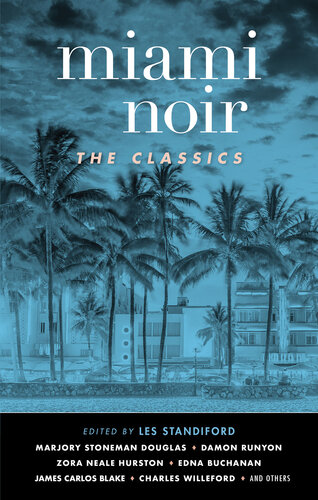
Miami Noir
The Classics
کتاب های مرتبط
- اطلاعات
- نقد و بررسی
- دیدگاه کاربران
نقد و بررسی

September 25, 2006
Sixteen new, diverse and highly entertaining mystery stories pack Akashic's latest city-by-city tour of modern noir, spotlighting the "Miami School," which has sprung to dynamic life in the wake of the legendary Charles Willeford and his signature novel Miami Blues
. This anthology prowls through South Beach and across Alligator Alley, hitting every demographic, from long-term Cuban émigrés to Haitian boat people and the garden variety psychopathic redneck. In James W. Hall's "Ride Along," a college professor with an interest in crime writing goes slumming with a thug called Jumpy—"6'4", skinny as a greyhound, pasty-skinned, all knuckles and Adam's apple"—with unexpected results. Vicki Hendricks does a neat deconstruction of classic noir with "Boozanne, Lemme Be," wherein the 4'10" protagonist—"too short for normal chicks, too tall for a dwarf"—lives undetected under a house until he connects with the titular Boozanne and dives still further into ruin. This volume is as solid as the coral rock lying beneath the Miami streets.

August 15, 2020
Nineteen classic tales of gloom from the Sunshine State. Although the stories, all of them reprints, are grouped thematically into four sections, they're arranged chronologically, and their development over the 90-plus years they span is startling. In Marjory Stoneman Douglas' 1925 "Pineland," Miami is largely rural, even wilder in its landscape than the orderly groves of Orange County, which its pioneer heroine abandons for the pine forests further south. Nature is also the greatest threat in the excerpt from Zora Neale Hurston's 1937 classic, Their Eyes Were Watching God. But in Damon Runyon's "A Job for the Macarone," written the same year, people are the authors of their own doom. They lie, cheat, and double-cross each other, and they go right on doing so in Brett Halliday's 1944 novella, A Taste for Cognac. By the '70s and '80s, the focus begins to shift to political and social ills. The Cuban migration serves as backdrop for an excerpt from Douglas Fairbairn's "Street 8," and Charles Willeford explores predatory sexual behavior among single men in "Saturday Night Special." The economic angst of the 1990s is highlighted in Elmore Leonard's "The Odyssey," T.J. MacGregor's "The Works," Lynne Barrett's "To Go," and editor Standiford's "Tahiti Junk Shop." And as the 21st century dawns, stories like Vicki Hendricks' "Gators" and Preston L. Allen's "Superheroes" are markedly more sexualized, and the hardscrabble Little Havana setting of "Street 8" is reinvented as fabulous South Beach in Carolina Garcia-Aguilera's "Washington Avenue." A collection that shows how far a city can come and still maintain a strong noir tradition.
COPYRIGHT(2020) Kirkus Reviews, ALL RIGHTS RESERVED.

September 7, 2020
The 19 selections in this welcome reprint anthology in Akashic’s noir series enshrine the dark side of Miami. The earliest entries, from Marjorie Stoneman Douglas (“Pineland”), Zora Neal Hurston (an excerpt from Their Eyes Were Watching God), and Damon Runyon (“A Job for the Macarone”), evoke a backwater on the verge of becoming a metropolis. These early stories command the most interest as they reach into history and pull out long-lost regional speech patterns. Late 20th-century classics are well represented, including “Saturday Night Special,” a spare, tough piece from Miami crime-writing godfather Charles Willeford, and the wry “The Odyssey” from Elmore Leonard, whose ear for a hustler’s speech is as sharply tuned in South Florida as it is in Detroit. David Beaty’s chilling “Ghost” shows how dreamers, scammers, and violent criminals exist side-by-side in Miami, separated by the thinnest of lines. Carolina Garcia Aguilera’s observant “Washington Avenue,” a detective procedural, tracks the city’s evolution as it becomes an international tourist destination and the impact of that change on the locals. This historical survey makes a fine case for Miami as a timeless setting for great crime fiction.

























دیدگاه کاربران